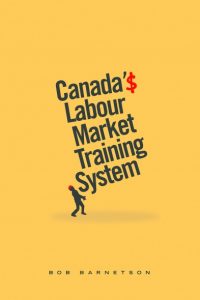In a free, rich, peaceful, capitalist country like Canada there should never be any prolonged shortage of anything. Yet Canadians are told we face a crippling shortage of labour. How can that be?
CBC Radio’s Cross-Country Checkup in 2015 told the story of the Star Café of Maple Creek, Sask., population 2000, an uncommonly high-toned restaurant for a small Prairie town. It sells prawns and $22 jambalaya, though Maple Creek is 1,400 kilometres from the nearest live seafood market.
Owner Tina Creswell said she had to hire a chef from Guyana and would close if not for migrant labour. “We had to turn to foreign workers,” said Creswell. “We’ve been advertising continually”; “Was it because you offer such cheap wages?” asked host Rex Murphy. “We pay what we can,” replied Creswell. No figure was mentioned.
Maple Creek is not a closed economy. It has no wage and price controls. Star Café management might hike pay to attract a Saskatchewan chef, or change the menu, or adjust their model, or cook the prawns themselves. Millions of small business people make these decisions every day. I am one of them.
It cannot be the industrial policy of the Government of Canada to ensure even cafés are too big to fail, or that employers are guaranteed federally-regulated access to Third World labour so the people of Maple Creek might affordably dine on prawns. If higher wages mean higher prices that drive Maple Creek to buy $6 Subway sandwiches instead, the customer has spoken and is never wrong. Ronald Reagan called this the magic of the marketplace.
Yet Canadians are subject to media laments and “endless corporate hand-wringing” over labour shortages, writes Prof. Bob Barnetson of Athabasca University. “This self-interest should make us cautious about skills shortages,” he says.
Barnetson in Canada’s Labour Market Training System puts his case to the reader with a genial writing style, extensive research and damning graphs. Claims of a labour shortage crisis are artificial, he writes. Where rare shortages occur they are isolated and short-lived, or reflect employers’ reluctance to “do their part in training, e.g. hire apprentices,” he says.
“This reality sits uneasily with media coverage of skills shortages,” writes Barnetson. “In addition to overstating the degree of labour shortages that exists, media coverage often fails to differentiate between absolute shortages (a situation where there are no qualified potential workers available) or relative shortages (a situation where there is no qualified workers prepared to work for the wages and working conditions on offer).”
Proponents omit the parentheses, he explains. There are 454,000 apprentices in Canada. One of them must know how to cook prawns. If not, we will go prawn-less. Instead, writes Barnetson, authorities built a Byzantine labour system that sees fish processors hire migrants in Atlantic counties with 16 percent local unemployment.
“Governments and educational institutions are characterized as out of touch with the needs of employers,” writes Barnetson. “And students and workers are said to be too ill-informed, naïve or lazy to get the training they need to be competitive in the labour market. Mostly ignored in this discourse is the low and continually declining level of employer-sponsored training.”
By Holly Doan
Canada’s Labour Market Training System, by Bob Barnetson; Athabasca University Press; 190 pages; ISBN 9781-7719-92411; $29.99






